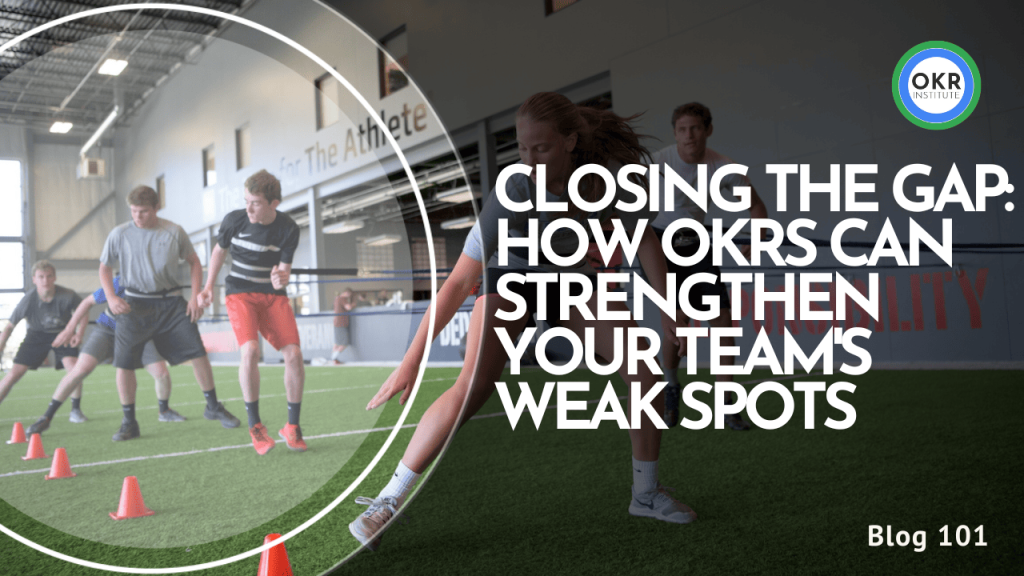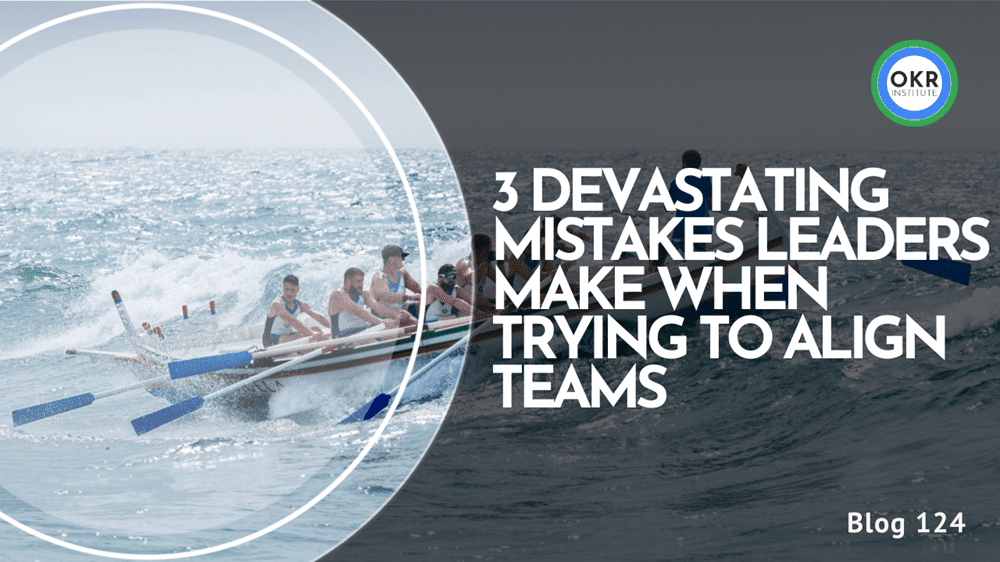Closing the Gap: How OKRs Can Strengthen Your Team’s Weak Spots

Introduction to Team Competency Gaps
Competency gaps refer to the discrepancies between the skills, knowledge, and abilities required for a team to perform effectively and the actual competencies possessed by the team members. These gaps can arise due to various factors, such as changing business needs, technological advancements, or shifts in market dynamics.
Addressing team competency gaps is crucial because they can significantly impact team performance, productivity, and overall success. When team members lack the necessary competencies, they may struggle to complete tasks efficiently, make informed decisions, or adapt to new challenges. This can lead to missed opportunities, decreased quality of work, and a competitive disadvantage for the organization.
Unaddressed competency gaps can also contribute to low morale, job dissatisfaction, and high turnover rates within the team. Team members may feel overwhelmed, undervalued, or frustrated by their inability to meet expectations or contribute effectively. This can create a negative work environment and hinder collaboration and teamwork.
Closing team competency gaps is essential for fostering a skilled, adaptable, and high-performing team. By identifying and addressing these gaps, organizations can ensure that their teams have the necessary competencies to tackle current and future challenges, drive innovation, and achieve strategic objectives.
Identifying Team Competency Gaps
Identifying team competency gaps is a crucial first step in addressing skill deficiencies and driving continuous improvement. This process involves assessing the current skills, knowledge, and abilities within the team and comparing them against the desired or required competencies for optimal performance.
There are several methods and techniques that can be employed to identify team competency gaps effectively:
- Skills Assessment: Conduct individual or team-based skills assessments to evaluate the current level of proficiency in specific areas. This can include written tests, practical exercises, simulations, or self-assessments.
- Performance Evaluations: Analyze performance data, such as project outcomes, customer feedback, and productivity metrics, to identify areas where the team may be falling short due to competency gaps.
- Observation and Feedback: Observe team members in action during meetings, presentations, or project execution. Gather feedback from managers, peers, and stakeholders to gain insights into potential competency gaps.
- Gap Analysis: Conduct a structured gap analysis by comparing the team’s current competencies against the desired or required competencies. This can involve creating a competency matrix or using specialized assessment tools.
- Interviews and Focus Groups: Engage team members in interviews or focus group discussions to gather qualitative data on their perceived strengths, weaknesses, and areas for improvement.
- Industry Benchmarking: Compare the team’s competencies against industry standards, best practices, or the competencies of high-performing teams in similar roles or industries.
Effective competency gap identification often involves collecting data from multiple sources, such as a combination of assessments, evaluations, observations, and feedback. This triangulation approach helps ensure a comprehensive understanding of the team’s competency landscape and identifies areas that require targeted development efforts.
Common Team Competency Gaps
Common competency gaps that teams often face include:
Communication Skills
- Ineffective communication between team members, leading to misunderstandings and project delays.
- Lack of active listening skills, resulting in missed important details or requirements.
- Inability to communicate complex ideas or technical information clearly.
Problem-Solving and Critical Thinking
- Difficulty in identifying root causes of problems and developing effective solutions.
- Lack of analytical and critical thinking skills to evaluate situations objectively.
- Inability to think creatively or “outside the box” to find innovative solutions.
Technical and Domain-Specific Knowledge
- Inadequate technical skills or subject matter expertise required for the team’s work.
- Failure to keep up with the latest industry trends, tools, or technologies.
- Lack of cross-training or knowledge sharing within the team.
Leadership and Management
- Ineffective leadership, resulting in poor team coordination and motivation.
- Lack of conflict resolution and decision-making skills among team leaders.
- Inability to delegate tasks effectively or provide constructive feedback.
Adaptability and Flexibility
- Resistance to change or unwillingness to adapt to new processes or technologies.
- Difficulty in handling ambiguity or shifting priorities in a dynamic work environment.
- Lack of agility in responding to unexpected challenges or opportunities.
- Siloed mentality, leading to a lack of collaboration and knowledge sharing.
- Inability to work effectively in cross-functional or diverse teams.
- Lack of trust, respect, or accountability among team members.
These are just a few examples of common competency gaps that teams may face. Identifying and addressing these gaps is crucial for improving team performance, productivity, and overall success.
Closing Team Competency Gaps
Addressing competency gaps within a team requires a strategic and multifaceted approach. Here are some effective strategies to consider:
Training and Development: Investing in training and professional development programs can be a powerful way to upskill your existing team members. Identify the specific competencies that need improvement and design targeted training programs to bridge those gaps. This can include formal classroom training, online courses, mentorship programs, or on-the-job coaching.
Hiring and Recruitment: If the competency gaps are significant or require specialized expertise, consider hiring new talent with the desired skills and experience. This can bring fresh perspectives and knowledge to your team, while also complementing the existing strengths of your current employees.
Restructuring and Reassignment: In some cases, restructuring your team or reassigning roles and responsibilities can help better align individual competencies with the tasks at hand. This approach allows you to leverage the strengths of each team member more effectively and distribute workloads based on their areas of expertise.
Process Improvements: Competency gaps can sometimes be addressed by optimizing processes and workflows. Streamlining procedures, implementing automation, or adopting new technologies can reduce the need for certain competencies or make existing processes more efficient. Continuously reviewing and improving your processes can help mitigate competency gaps over time.
Cross-Training and Job Rotation: Encouraging cross-training and job rotation within your team can foster knowledge sharing and skill development. By exposing team members to different roles and responsibilities, they can acquire new competencies and gain a broader understanding of the overall operation.
Collaboration and Teamwork: Building a collaborative and supportive team environment can help bridge competency gaps through knowledge sharing and collective problem-solving. Encourage open communication, mentorship, and teamwork to leverage the diverse strengths and expertise of your team members.
External Resources and Partnerships: In some cases, it may be more efficient to leverage external resources or partnerships to fill competency gaps. This could involve outsourcing specific tasks, hiring consultants, or collaborating with other organizations or subject matter experts.
Remember, closing competency gaps is an ongoing process that requires continuous assessment, adaptation, and investment in your team’s growth and development.
The Role of Objectives and Key Results (OKRs)
Objectives and Key Results (OKRs) are a powerful goal-setting framework that can help organizations identify, prioritize, and address team competency gaps effectively. OKRs provide a structured approach to defining and communicating organizational objectives, breaking them down into measurable key results, and tracking progress towards their achievement.
By incorporating competency development into the OKR process, teams can ensure that they are proactively identifying and addressing the skills and knowledge gaps that may hinder their ability to achieve their goals. Here’s how OKRs can help close team competency gaps:
- Identifying Competency Gaps: During the OKR planning process, teams can analyze the competencies required to achieve their objectives and compare them with their current capabilities. This gap analysis helps identify areas where additional training, hiring, or skill development is needed.
- Prioritizing Competency Development: OKRs enable teams to prioritize competency development initiatives based on their impact on achieving organizational objectives. By aligning competency development with strategic goals, teams can focus their efforts and resources on the most critical areas.
- Setting Measurable Goals: OKRs require teams to define measurable key results, which can include competency-related metrics. For example, a key result could be “80% of the team achieves proficiency in data analysis by the end of the quarter.” This approach ensures that competency development efforts are quantifiable and trackable.
- Facilitating Cross-functional Collaboration: OKRs promote transparency and cross-functional collaboration, enabling teams to share their competency development goals and leverage expertise from across the organization. This collaboration can lead to more effective knowledge sharing and skill development initiatives.
- Continuous Improvement and Adaptation: OKRs are typically reviewed and updated on a regular basis (e.g., quarterly or annually), allowing teams to adjust their competency development strategies based on progress, changing priorities, and emerging skill gaps.
By integrating OKRs into their competency development efforts, teams can foster a culture of continuous learning, align skill development with organizational objectives, and ensure that they have the necessary capabilities to achieve their goals and maintain a competitive edge.
Setting Competency-Related OKRs
Crafting effective Objectives and Key Results (OKRs) is crucial for closing team competency gaps and aligning capability development with organizational goals. Here are some guidelines for setting competency-related OKRs:
- Align with Organizational Priorities: Ensure that your competency-focused OKRs are aligned with the overall strategic objectives of the organization. This alignment ensures that the competencies you aim to develop are relevant and contribute to the company’s success.
- Involve Key Stakeholders: Engage with team members, managers, and subject matter experts to identify the critical competencies required for the team’s success. Collaborate with them to define the desired outcomes and measurable key results.
- Define Clear Objectives: Craft clear and specific objectives that outline the competencies you want to develop within the team. Use actionable language and avoid ambiguity. For example, “Enhance the team’s proficiency in data analysis and visualization techniques.”
- Set Measurable Key Results: Establish measurable key results that will indicate progress towards achieving the competency objectives. These key results should be specific, time-bound, and quantifiable. For instance, “By the end of Q3, 80% of the team members will have completed advanced data visualization training and demonstrated proficiency through practical projects.”
- Prioritize and Focus: Prioritize the most critical competency gaps and focus your OKRs on addressing those areas first. Trying to tackle too many competencies simultaneously can dilute your efforts and lead to suboptimal results.
- Allocate Resources: Ensure that the necessary resources, such as training programs, mentoring initiatives, or subject matter experts, are available to support the competency development efforts outlined in your OKRs.
- Encourage Continuous Learning: Foster a culture of continuous learning within the team by incorporating ongoing skill development and knowledge sharing as part of your OKRs. Encourage team members to explore new techniques, attend relevant workshops or conferences, and share their learnings with others.
- Monitor and Adjust: Regularly monitor the progress of your competency-related OKRs and be prepared to adjust or refine them as needed. Celebrate successes and identify areas for improvement or additional support.
By setting well-crafted competency-related OKRs, you can effectively guide your team’s capability development efforts, ensuring that they acquire the necessary skills and knowledge to contribute to the organization’s success.
Measuring and Tracking Progress
Measuring and tracking progress is crucial when closing team competency gaps using OKRs. Without proper metrics and monitoring, it becomes challenging to assess the effectiveness of your efforts and make necessary adjustments along the way.
Firstly, it’s essential to define clear and measurable metrics aligned with your competency-related OKRs. These metrics should quantify the desired outcomes and provide a tangible way to evaluate progress. For instance, if your objective is to improve team members’ proficiency in a specific software tool, you could measure the percentage of team members who achieve a certain certification level or track the average score on practical assessments.
Regularly monitoring the progress of your OKRs is equally important. This involves collecting data related to your defined metrics and analyzing it to identify trends and patterns. Establishing a consistent cadence for progress reviews, whether weekly, bi-weekly, or monthly, can help you stay on top of your team’s competency development journey.
As you monitor progress, be prepared to adjust your approach as needed. If you notice that certain strategies or initiatives are not yielding the desired results, don’t hesitate to pivot and try alternative methods. Embracing an agile mindset and being open to course corrections can significantly improve the chances of successfully closing competency gaps.
Additionally, consider involving team members in the monitoring process. Encouraging self-assessment and peer feedback can provide valuable insights and foster a sense of ownership and accountability. Celebrate milestones and successes along the way to maintain motivation and engagement.
Remember, measuring and tracking progress is not a one-time exercise but an ongoing process. Continuous monitoring and adjustment will help ensure that your team’s competency development efforts remain on track and aligned with your organizational goals.
Overcoming Challenges and Barriers
Closing team competency gaps is a worthwhile endeavor, but it’s not without its challenges. Organizations often face obstacles such as resistance to change, limited resources, and time constraints. However, with the right strategies, these barriers can be overcome.
One of the most common challenges is resistance from team members. Some individuals may be reluctant to embrace new skills or processes, either due to fear of the unknown or a belief that their current competencies are sufficient. To overcome this resistance, it’s crucial to communicate the importance of competency development clearly and involve team members in the process. Encourage open dialogue, address concerns, and highlight the benefits of closing competency gaps for both individual growth and team success.
Another significant barrier is the availability of resources. Developing new competencies often requires dedicated time, training materials, and potentially external expertise. Organizations should prioritize competency development and allocate appropriate resources, such as budgets for training programs, access to online courses or workshops, and dedicated time for team members to focus on learning and skill-building.
Time constraints can also hinder competency development efforts. With the demands of daily operations and competing priorities, it can be challenging to carve out dedicated time for learning and skill-building. To address this, organizations can explore strategies such as incorporating competency development into regular team meetings, offering flexible learning options (e.g., self-paced online courses), and encouraging cross-training or job shadowing opportunities.
Effective communication and change management strategies are crucial for overcoming these challenges. Regularly communicate the importance of competency development, celebrate successes, and provide ongoing support and encouragement to team members. Additionally, consider involving team members in the process of identifying competency gaps and developing solutions, as this can foster buy-in and ownership.
By proactively addressing these challenges and implementing targeted strategies, organizations can create an environment conducive to closing team competency gaps and fostering continuous learning and growth.
Sustaining Competency Development
Closing competency gaps and achieving desired levels of team competence is not a one-time effort; it requires a sustained and continuous approach. To maintain and enhance team competencies over time, organizations should prioritize making competency development an ongoing process deeply ingrained into their culture and operations.
One crucial aspect of sustaining competency development is fostering a learning culture within the team and the broader organization. This involves actively encouraging and supporting continuous learning, skill development, and knowledge sharing among team members. Regular training sessions, workshops, mentoring programs, and access to educational resources can contribute to creating an environment that values and promotes lifelong learning.
Additionally, it’s essential to adapt competency development efforts to changing circumstances. As business environments, technologies, and industry trends evolve, new competency requirements may emerge, and existing ones may become less relevant. Regularly reassessing and updating competency frameworks, aligning them with organizational goals and market demands, is crucial for maintaining a skilled and adaptable workforce.
Encouraging cross-functional collaboration and knowledge sharing can also play a vital role in sustaining competency development. By breaking down silos and facilitating the exchange of ideas and best practices across different teams and departments, organizations can leverage diverse expertise and foster a culture of continuous improvement.
Furthermore, effective communication and transparency regarding competency development initiatives are essential. Clearly communicating the importance of competency development, celebrating successes, and acknowledging areas for improvement can help maintain momentum and engagement among team members.
Lastly, organizations should consider integrating competency development into performance management and career development processes. By aligning individual goals and career paths with desired competencies, employees can take ownership of their professional growth and feel motivated to continuously enhance their skills and knowledge.
Case Studies and Examples
Example 1: Software Development Team at TechCorp
TechCorp, a leading software company, identified a competency gap in its development team’s knowledge of cloud computing technologies. To address this, they set an OKR focused on upskilling the team in cloud architecture and deployment.
The objective was: “Enhance the team’s cloud computing expertise by the end of Q3.”
Key results included:
- 80% of developers complete certified training in AWS and Azure
- Migrate at least 3 legacy applications to the cloud
- Achieve a minimum score of 80% on cloud architecture assessments
The team utilized a combination of formal training, hands-on projects, and knowledge-sharing sessions to achieve these goals. By the end of the quarter, they had successfully closed the competency gap, enabling them to deliver more efficient and scalable cloud-based solutions.
Example 2: Sales Team at RetailCo
RetailCo’s sales team struggled with effectively utilizing data analytics to drive their sales strategies. To bridge this gap, the sales leadership set an OKR focused on data-driven decision-making.
The objective was: “Improve data literacy and data-driven sales strategies by the end of the fiscal year.”
Key results included:
- 100% of sales reps complete data analytics training
- Increase the use of data-driven insights in sales proposals by 50%
- Achieve a 20% increase in sales conversions through data-driven targeting
The team underwent intensive training on data analysis tools and techniques, followed by regular coaching sessions and data-driven sales strategy workshops. By the end of the year, the sales team had significantly improved their data literacy, leading to more targeted and effective sales approaches, resulting in increased conversions and revenue.
Example 3: Customer Support Team at ServiceCorp
ServiceCorp’s customer support team faced challenges in providing consistent and efficient service across multiple channels. To address this, they set an OKR to enhance their omnichannel support capabilities.
The objective was: “Improve omnichannel support competencies to deliver seamless customer experiences by Q4.”
Key results included:
- 90% of support agents complete omnichannel training
- Achieve an average customer satisfaction score of 4.5/5 across all channels
- Reduce average response times by 25% across email, chat, and social media
The team implemented comprehensive training programs, cross-channel knowledge sharing, and process improvements to streamline their omnichannel support operations. By the end of the quarter, they had successfully closed the competency gap, resulting in improved customer satisfaction, faster response times, and a consistent brand experience across all support channels.
These examples showcase how teams in various industries have leveraged OKRs and targeted competency development initiatives to close critical skill gaps, driving improved performance, productivity, and overall organizational success.
Conclusion
Closing team competency gaps is crucial for organizational success and growth. By identifying and addressing these gaps proactively, teams can enhance their collective knowledge, skills, and abilities, leading to improved performance, increased efficiency, and better alignment with organizational goals.
The use of Objectives and Key Results (OKRs) provides a structured and measurable approach to closing competency gaps. By setting specific, measurable, and time-bound objectives related to competency development, and defining key results to track progress, teams can stay focused and motivated throughout the process.
Implementing OKRs for competency development offers numerous benefits, including:
- Clarity and Alignment: OKRs help teams align their competency development efforts with organizational priorities, ensuring that resources are allocated effectively.
- Measurable Progress: By defining key results, teams can track their progress and make data-driven decisions, enabling them to adjust their strategies as needed.
- Accountability and Ownership: OKRs foster a sense of accountability and ownership among team members, as they are actively involved in setting and achieving objectives.
- Continuous Improvement: The cyclical nature of OKRs encourages teams to continuously evaluate and improve their competencies, fostering a culture of lifelong learning and growth.
Addressing team competency gaps is an ongoing process that requires commitment, dedication, and a willingness to adapt and evolve. By embracing OKRs and fostering a culture of continuous learning, teams can stay ahead of the curve, navigate challenges, and unlock their full potential, ultimately contributing to the long-term success of the organization.
CEO of the OKR Institute
Related Courses
Recent Posts
Tags
#OKR
#OKR Implementation
#Competency






